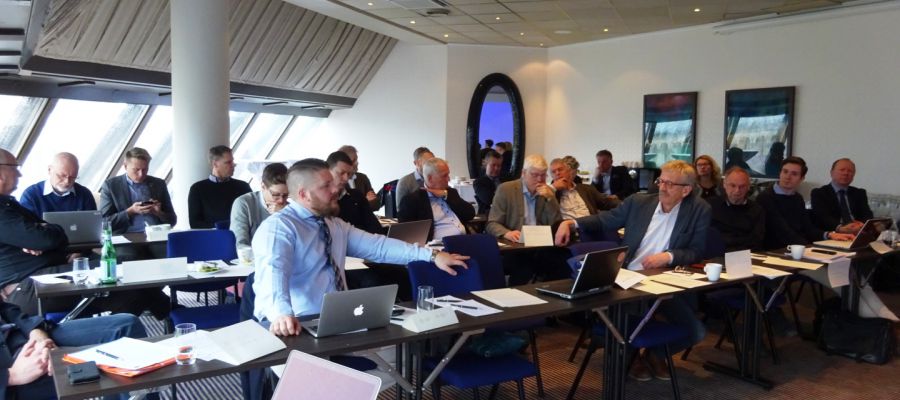
Published 27 Mar, 2017
A cross-border regional development strategy for the Central Scandinavian Borderland
The Central Scandinavian borderland is characterized by a landscape of forests, lakes and rivers, but also agriculture and industry and channels. It is the area between the three Nordic capitals Oslo, Stockholm and Copenhagen. Since the 13th century a highly frequented road network gave the region the character of a common territory. However since the border was re-established in 1905, this entity was broken up. The national transport planning authorities have not since then been able to make a comprehensive transport plan for the whole common territory of the three countries. Consequently most plans still end at the borders. And so is also the situation also with public transport services. This leaves a situation where borderland(s) are severely suffering from lack of trans-border integration of governance strategies. At the end of the day the competitiveness of many businesses, the labour market and the environment are at stake as well.
On 13 March 2017 about 30 experts and officials from diverse backgrounds gathered in Oslo. The aim was to share ideas and think creatively about innovative pathways to sustainable regional development in a mainly rural border land area, located at the border zone of the Oslo labor market.
“All land-connections between the three Scandinavian capitals run through the Central Scandinavian Borderland. However, the transport-infrastructure needs more capacity, modernisation and better connections to the TEN-T core network corridors. The railway has poor quality and the lack of efficiency is significant. The market shares are low on freight and the shares on medium- and long-distance person transport is very low compared to air and road, where the traffic has boomed the last decades.”, says Alf Johansen of the Innovation Circle Network from Norway. “The cooperation on cross-border transport-solutions within the Nordic countries has not been prioritised by the national or regional authorities.” This is why he joined the TENTacle project and initiated a Nordic transport strategy group in cooperation with the Nordic Council and several cross-border cooperation councils.
Amongst the speakers was Wiktor Szydarowski, TENTacle Lead Partner from Region Blekinge. He highlighted the changing population dynamics and mobility needs in the Baltic Sea Region.
Cliff Hague from Edingburgh moderated the event together with Oivind Holt from Halden Norway. They raised the question: why are border regions often disadvantaged? The initiation of cooperation by local or regional governments or NGOs was pointed out as one of the keys to success. Also the importance of cross-border and transitional cooperation was highlighted in order to help to overcome institutional barriers, mobilize finances, support economic, social and cultural exchange as well as new relations.
However it takes a lot of capacity (time and cost) to overcome working routines of national ministries towards cross-border decision making and governance, Wiktor Szydarowski, argues. Tom Granquist from Eastern Norway County Network and Norwegian project coordinator of TENTacle sister project Scandria2Act claimed more emphasis on solution side and no longer problem analysis.
Further speakers included amongst others Gustaf Norlén from Nordregio, Mathias Lindström from Kvarken Council and partner of the second TENTacle sister project NSB CoRe, Jan Lindgren of Trafikverket, Max Falk from Västra Götalands Region, Marcus Smedman of Värmlands region, Siv Jacobsen, Vice mayor Ostfold County Council , Per Corshammar of Perfekt Track HB and Jorg Westermann of Norsk Bane AS.
What will be needed for a strong strategy for the Scandinavian Borderland? Political will, a legal framework, innovative ideas and a common will.
The report from the meeting will be used for the elaboration of the final strategy report which will be the main output from the respective TENTacle activity case. The strategy paper will include a list of suggestions to regional and national government, Nordic Council and European Commission.
Read more about the event and have a look at the presentations on: http://www.innovationcircle.net/accessibility-in-central-scandinavia.5973041-97612.html
More information:
Alf S. Johansen
Innovation Circle Network
Task coordinator Central Scandinavian Borderland
alf@varmost.net